Sale 2563 - Lot 243
Additional Images
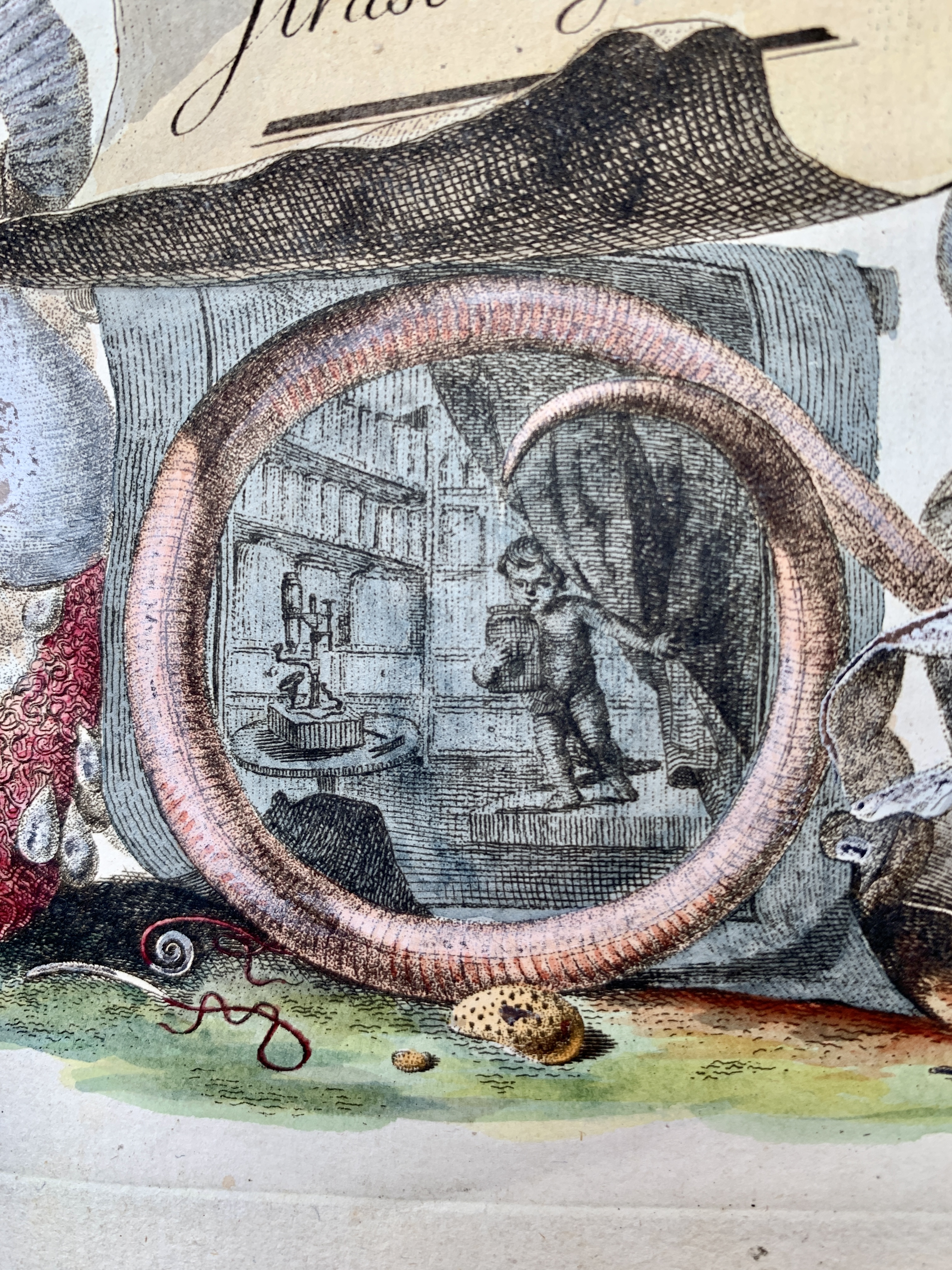
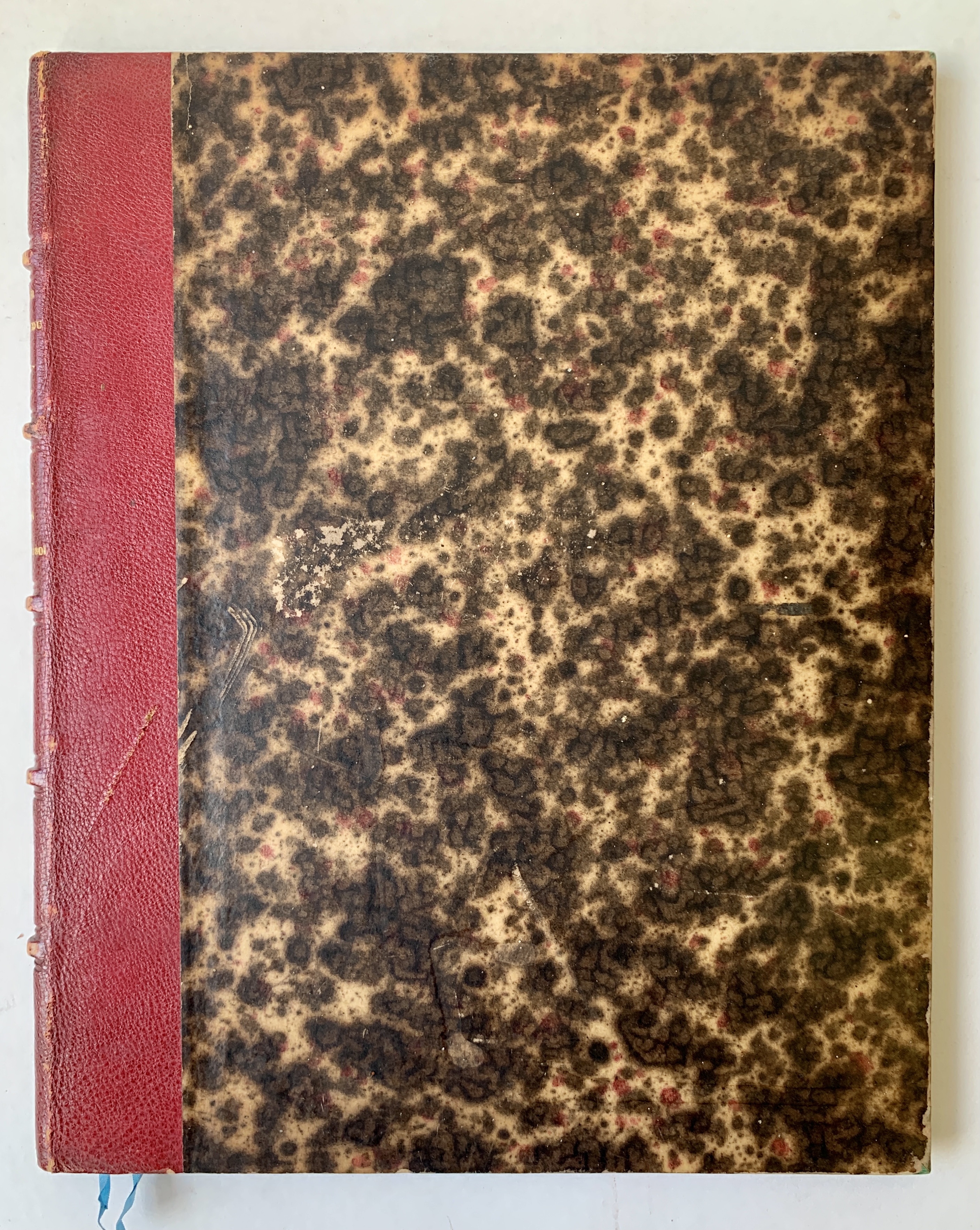
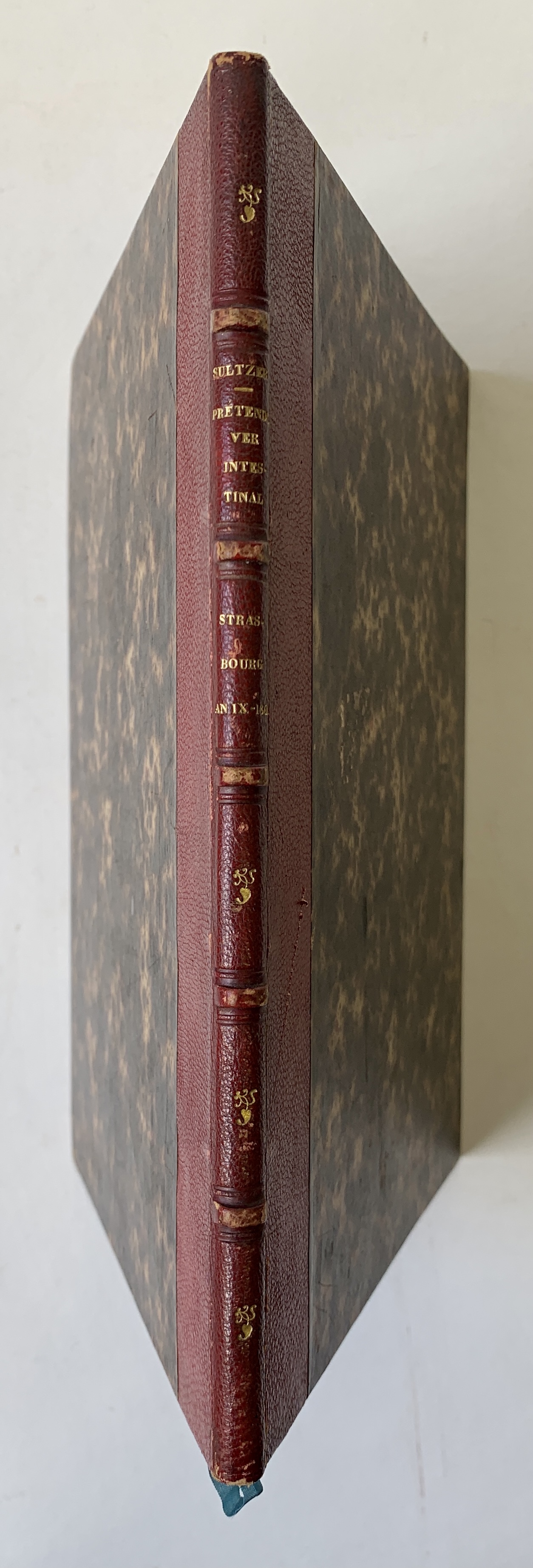
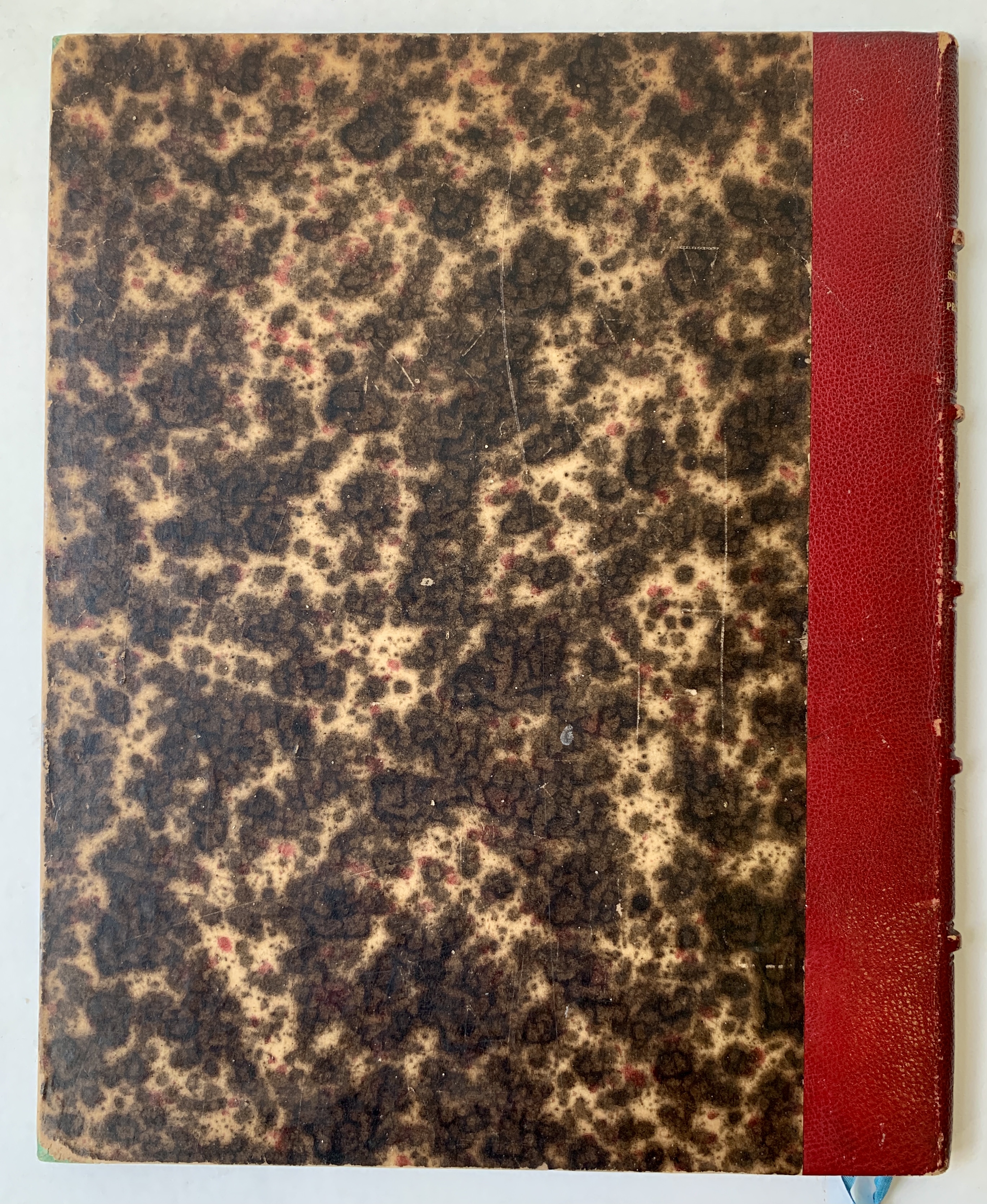

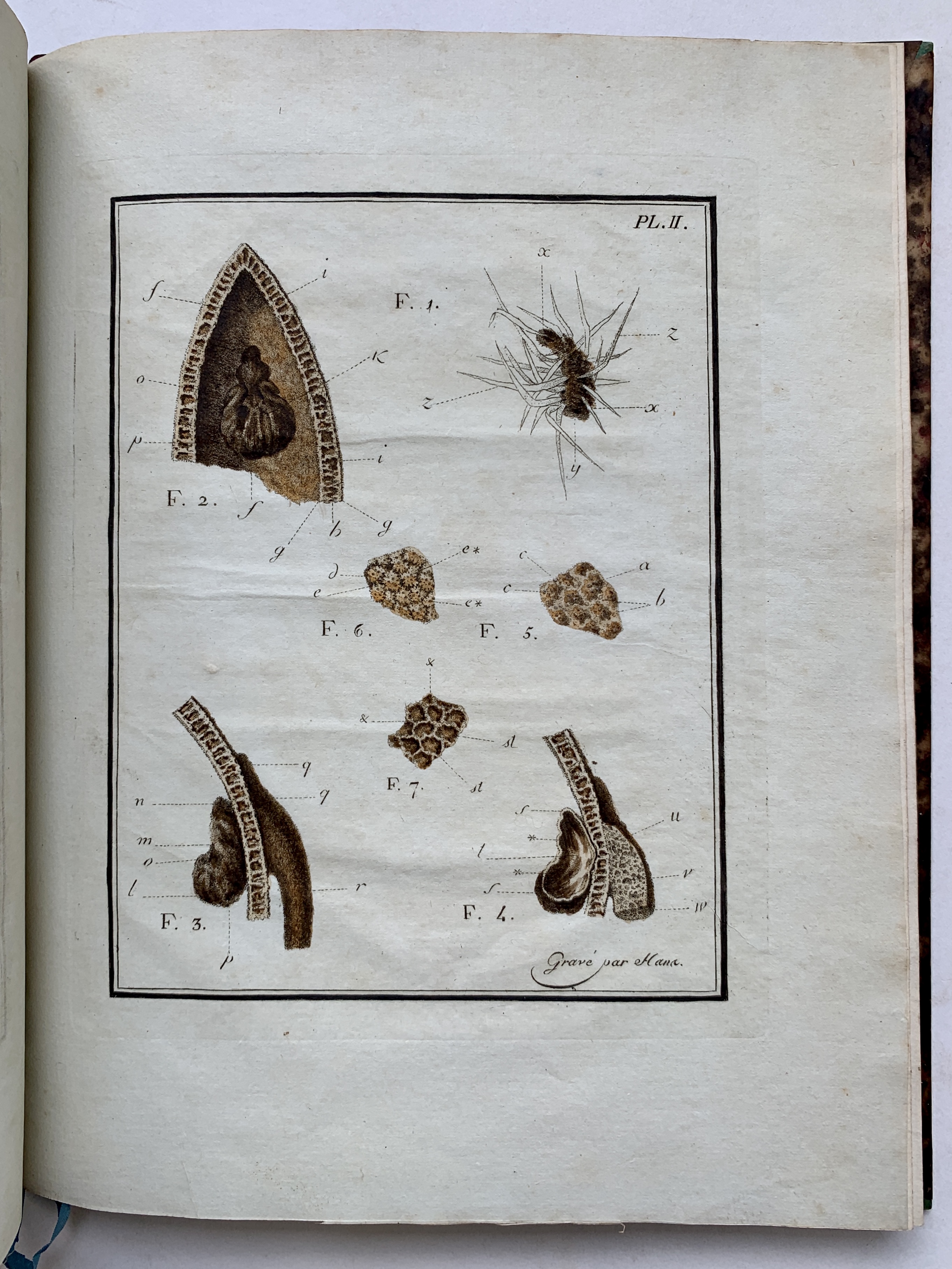
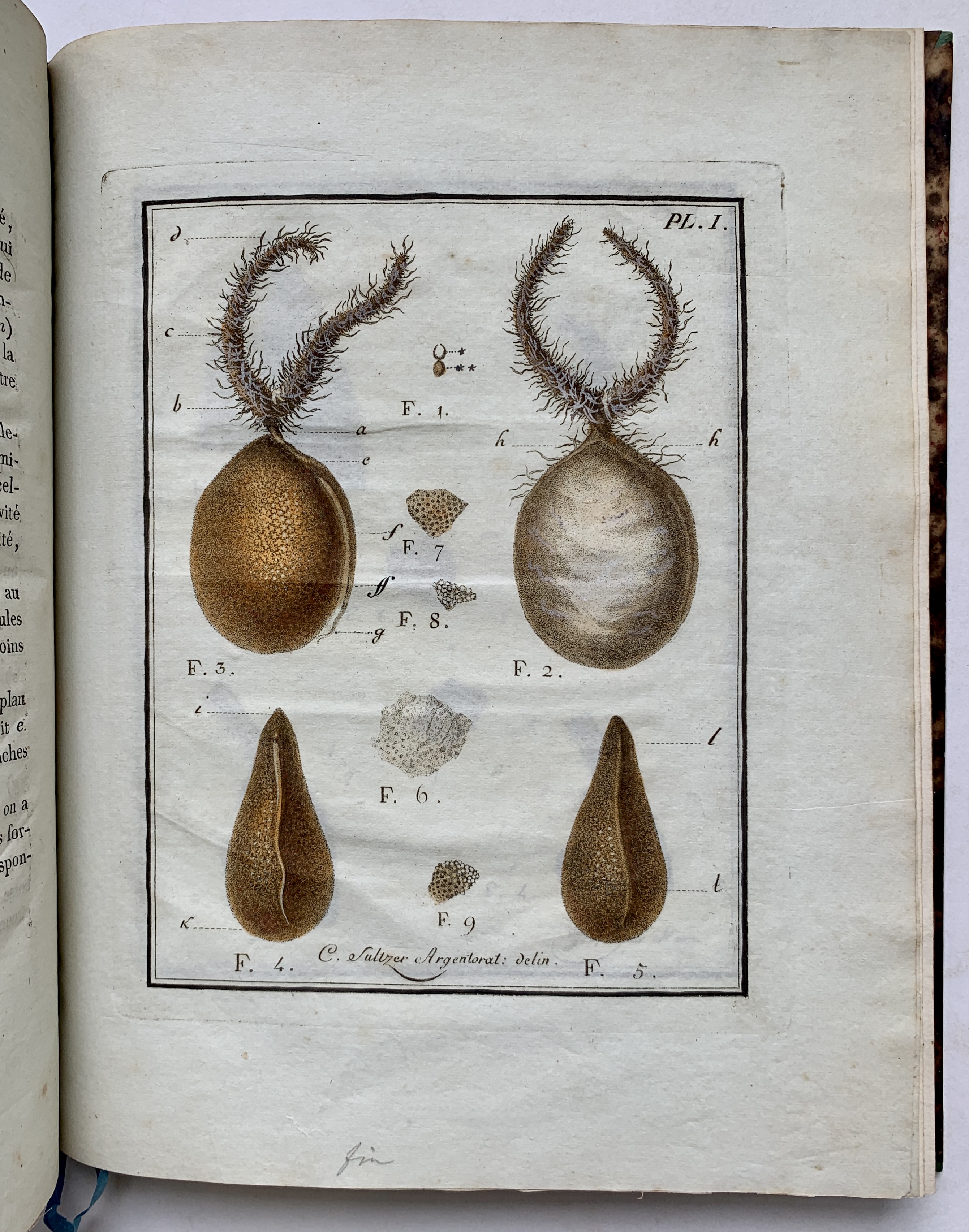








1 /
7









Sale 2563 - Lot 243
Estimate: $ 400 - $ 600
Sultzer, Charles (1770-1854)
Dissertation sur un Ver Intestinal Nouvellement Découvert et Décrit sous le Nom Bicorne Rude.
Strasbourg & Paris: J.A. Fischer chez Amand Koenig, 1801.
First edition, hand-colored engraved title and two full-paged hand-colored engravings bound after the text, [4]-52 pages; bound in contemporary half red morocco, decorative paper boards, spine tooled and lettered in gilt, nicely colored, contents fresh, some deckle edges, 8 3/4 x 6 3/4 in.
Young Sultzer saw a twenty-six year-old female patient with gastric complaints. "Le bicorne rude avait été évacué en grande abondance par une jeune fille [...] à la suite d'un purgatif." (Bottentuit) Under the microscope, the doctor observed these strange horned structures, the "bicorne rude" of the title, and concluded that he had discovered a new species of parasitic intestinal worm. Although Sultzer's work was accepted by some contemporary colleagues, subsequent research revealed the mysterious horned parasite to be nothing more than seed of the black mulberry (Morus nigra), presumably eaten (in abundance) by his patient. German-Austrian hygienist and parasitologist Johann Gottfried Bremser (1767-1827) reviewed Sulter's work and suggested that these worms looked very much like seeds, although he wasn't sure of the variety. And thus the bicorne rude passed from parasite to pseudo-parasite.
Cahiers de Formation Parasitologie, 1995, 5-6; Quérard IX, 292; Buchnummer des Verkäufers 65046; see also Bottentuit's Trente-Sixième Aneé la France Médicale, page 1310, "Pseudo-parasites."
Dissertation sur un Ver Intestinal Nouvellement Découvert et Décrit sous le Nom Bicorne Rude.
Strasbourg & Paris: J.A. Fischer chez Amand Koenig, 1801.
First edition, hand-colored engraved title and two full-paged hand-colored engravings bound after the text, [4]-52 pages; bound in contemporary half red morocco, decorative paper boards, spine tooled and lettered in gilt, nicely colored, contents fresh, some deckle edges, 8 3/4 x 6 3/4 in.
Young Sultzer saw a twenty-six year-old female patient with gastric complaints. "Le bicorne rude avait été évacué en grande abondance par une jeune fille [...] à la suite d'un purgatif." (Bottentuit) Under the microscope, the doctor observed these strange horned structures, the "bicorne rude" of the title, and concluded that he had discovered a new species of parasitic intestinal worm. Although Sultzer's work was accepted by some contemporary colleagues, subsequent research revealed the mysterious horned parasite to be nothing more than seed of the black mulberry (Morus nigra), presumably eaten (in abundance) by his patient. German-Austrian hygienist and parasitologist Johann Gottfried Bremser (1767-1827) reviewed Sulter's work and suggested that these worms looked very much like seeds, although he wasn't sure of the variety. And thus the bicorne rude passed from parasite to pseudo-parasite.
Cahiers de Formation Parasitologie, 1995, 5-6; Quérard IX, 292; Buchnummer des Verkäufers 65046; see also Bottentuit's Trente-Sixième Aneé la France Médicale, page 1310, "Pseudo-parasites."





